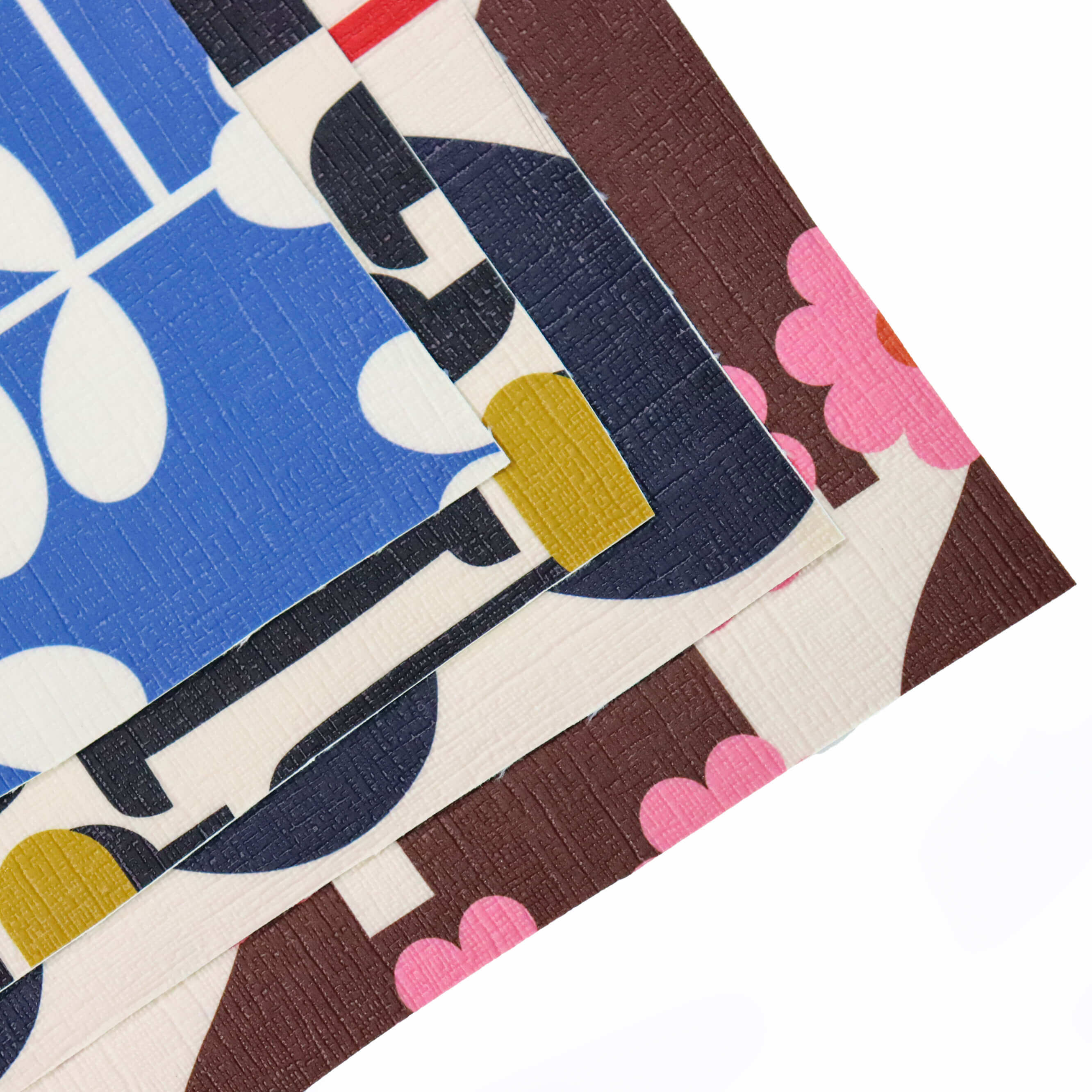Email format error
Email cannot be empty
Email already exists
6-20 characters(letters plus numbers only)
The password is inconsistent
Email format error
Email cannot be empty
Email does not exist
6-20 characters(letters plus numbers only)
The password is inconsistent

News

Synthetic Vegan Leather: Ethical Innovation in Fashion Introduction to Synthetic Vegan Leather
In today's dynamic and eco-conscious world, the rise of synthetic vegan leather has garnered significant attention across various industries, from fashion to environmental sustainability. This innovative material offers a compelling alternative to traditional leather, combining ethical considerations with functional and aesthetic appeal.
Definition and Overview
Synthetic vegan leather, often referred to as faux leather or vegan leather, is a man-made material designed to replicate the look and feel of genuine leather without using animal products. Originating from a blend of synthetic polymers and natural fibers, such as cork or pineapple leaves, this eco-friendly alternative prioritizes ethical production methods and sustainable practices.
Characteristics and Properties
When examining synthetic vegan leather, several distinct characteristics set it apart. Notably, its texture and feel closely resemble those of authentic leather, providing consumers with a comparable tactile experience. Additionally, advancements in manufacturing techniques have enhanced its durability and resistance to environmental factors, ensuring longevity and performance in various applications.
Importance in the Fashion and Textile Industries
The fashion and textile industries have increasingly embraced synthetic vegan leather due to growing demand for ethical and sustainable alternatives. Designers and brands collaborate to incorporate this innovative material into collections, aligning with consumer preferences for cruelty-free and environmentally responsible products. Furthermore, the adoption of synthetic vegan leather reflects broader trends towards sustainability, emphasizing the industry's commitment to reducing environmental impact and promoting ethical practices.

Distinction from Traditional Leather
While synthetic vegan leather shares similarities with traditional leather in appearance and functionality, distinct differences exist in production processes and ethical considerations. Traditional leather production often involves significant environmental resources, including water, land, and energy consumption, raising concerns about sustainability and ecological impact. In contrast, synthetic vegan leather prioritizes ethical sourcing and manufacturing practices, minimizing harm to animals and ecosystems while offering a viable alternative for consumers and industries alike.
Consumer Awareness and Perception
As consumer awareness of ethical and sustainable alternatives continues to grow, synthetic vegan leather has gained traction in the marketplace. Factors influencing consumer choices range from ethical considerations and sustainability initiatives to fashion trends and product availability. Moreover, market trends indicate increasing adoption of synthetic vegan leather products across diverse demographics, reflecting shifting preferences and values within contemporary society.
Future Outlook and Innovations
As we look toward the future, the trajectory of synthetic vegan leather appears promising, with ongoing innovations and collaborations driving growth and development within the industry. Technological advancements in material science and manufacturing processes continue to refine the quality, durability, and versatility of synthetic vegan leather, expanding its applications across various sectors beyond fashion.
Collaborations between designers, scientists, and environmentalists further propel the evolution of synthetic vegan leather, fostering interdisciplinary approaches to sustainability and innovation. For instance, research initiatives focus on optimizing raw materials, enhancing biodegradability, and reducing environmental impact throughout the product lifecycle. Such endeavors reflect a holistic commitment to ethical practices, environmental stewardship, and consumer satisfaction, positioning synthetic vegan leather as a cornerstone of sustainable development and responsible consumption.
Challenges and Considerations
Despite the myriad benefits and opportunities associated with synthetic vegan leather, challenges and considerations warrant careful examination and proactive solutions. For example, addressing potential environmental concerns related to synthetic materials requires ongoing research, innovation, and collaboration to ensure responsible sourcing, production, and disposal practices. Additionally, consumer education and awareness initiatives play a pivotal role in shaping perceptions, fostering trust, and promoting informed decision-making within the marketplace.
Furthermore, regulatory frameworks and industry standards continue to evolve, necessitating compliance, transparency, and accountability across the supply chain. By embracing ethical principles, adopting best practices, and prioritizing sustainability, stakeholders can navigate complexities, mitigate risks, and foster resilience within the competitive landscape of synthetic vegan leather and related industries.
Conclusion
In conclusion, the emergence and evolution of synthetic vegan leather signify a transformative shift towards sustainability, ethics, and innovation within global markets and society at large. By integrating perspectives from multiple domains of knowledge, fostering interdisciplinary collaborations, and embracing responsible practices, synthetic vegan leather encapsulates the potential to redefine industries, inspire consumer choices, and contribute to a more equitable and sustainable future for generations to come.
As stakeholders across sectors continue to engage, innovate, and advocate for ethical and sustainable alternatives, the legacy of synthetic vegan leather will undoubtedly endure as a testament to ingenuity, integrity, and impact within a rapidly evolving landscape of possibilities and potentialities. Through collective efforts, shared values, and forward-thinking initiatives, we can harness the power of synthetic vegan leather to create lasting value, meaningful change, and a brighter tomorrow for our planet and its inhabitants.

